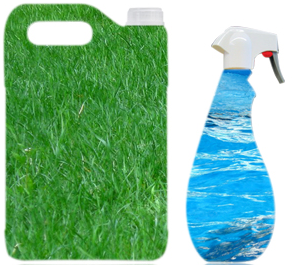Cleaning products are necessary for maintaining attractive and healthful Conditions in the home and workplace. In addition to the obvious aesthetic benefits of cleansing, the removal of allergens, dust, and infectious agents is vital to maintaining a healthy indoor environment. But cleaning products can present several health and ecological concerns.  They may contain chemicals related to skin, eye, or respiratory irritation, or other individual health issues. Moreover, the concentrated forms of a few industrial cleaning products are categorized as hazardous, creating potential handling, storage, and disposal problems for consumers. Reducing the human health and ecological concerns is a significant incentive for executing an EPP cleaning products program. A number of the recommendations in maid service Annapolis guide are based on the fundamental pollution prevention principles of reducing the quantity and hazards of materials used.
They may contain chemicals related to skin, eye, or respiratory irritation, or other individual health issues. Moreover, the concentrated forms of a few industrial cleaning products are categorized as hazardous, creating potential handling, storage, and disposal problems for consumers. Reducing the human health and ecological concerns is a significant incentive for executing an EPP cleaning products program. A number of the recommendations in maid service Annapolis guide are based on the fundamental pollution prevention principles of reducing the quantity and hazards of materials used.
 They may contain chemicals related to skin, eye, or respiratory irritation, or other individual health issues. Moreover, the concentrated forms of a few industrial cleaning products are categorized as hazardous, creating potential handling, storage, and disposal problems for consumers. Reducing the human health and ecological concerns is a significant incentive for executing an EPP cleaning products program. A number of the recommendations in maid service Annapolis guide are based on the fundamental pollution prevention principles of reducing the quantity and hazards of materials used.
They may contain chemicals related to skin, eye, or respiratory irritation, or other individual health issues. Moreover, the concentrated forms of a few industrial cleaning products are categorized as hazardous, creating potential handling, storage, and disposal problems for consumers. Reducing the human health and ecological concerns is a significant incentive for executing an EPP cleaning products program. A number of the recommendations in maid service Annapolis guide are based on the fundamental pollution prevention principles of reducing the quantity and hazards of materials used.NOTE: The following dialogue primarily addresses hazards associated with The real risks from these substances at normal exposure levels tend to be uncertain, and in many cases are most likely low. Regardless of the expected risk amounts, however, reducing the intrinsic danger of a product is a desired pollution prevention objective as part of decisions which also take into consideration other important product characteristics.
Cleaning products are introduced to the surroundings during Normal usage through evaporation of volatile elements and rinsing down the drain of residual product from stripped surfaces, sponges, etc.. Janitorial staff and others who perform cleaning can be exposed to concentrated cleaning solutions. However, good training and application of a Chemical Management System (a set of proper processes to ensure appropriate storage, handling, and usage ) can considerably minimize or protect against exposure to concentrated cleaning product during handling and use.
Certain ingredients in cleaning products may pose hazard Concerns to vulnerable populations (e.g., skin and eye irritation in workers) or toxicity to aquatic species in waters getting inadequately treated wastes (note that standard sewage treatment effectively reduces or eliminates most cleaning product components ). For example, alkylphenol ethoxylates, a frequent surfactant ingredient in cleansers, have been demonstrated in laboratory studies to function as an"endocrine disrupter," causing adverse reproductive effects of the types seen in wildlife exposed to polluted oceans.
Ingredients containing phosphorus or nitrogen can These donations, however, are typically small in comparison to other point and non-point sources.
Affect indoor air quality and also contribute to smog formation in outdoor air.
Benefits of Buying Green
Selecting less hazardous products that have favorable
Buying cleaners in concentrates with proper treatment protects, and reusable, decreased, or recyclable packaging, reduces packaging waste and transportation energy.
Purchasing less hazardous cleaners may reduce costs when it takes time to dispose of any leftover cleaners.


